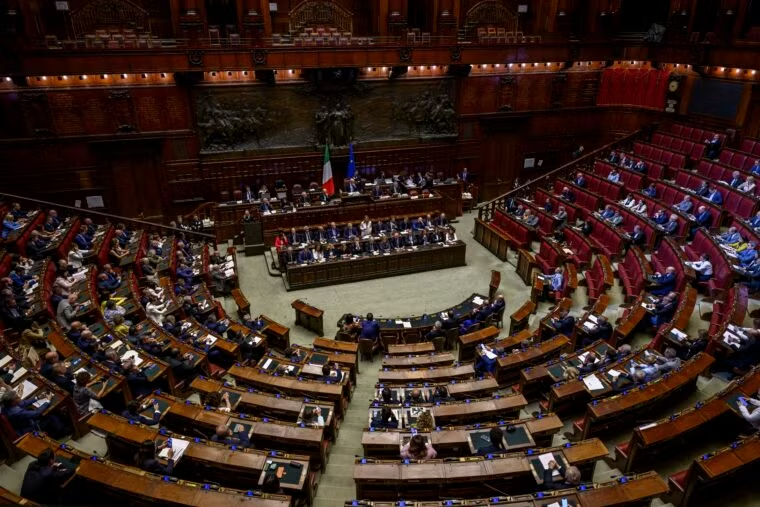Analyses / Europe, European Union, NATO
1 July 2024
Differentiated Autonomy of Regions: Towards a Federal Italy?

Differentiated Autonomy: A Victory for the League After 30 Years of Struggle
The League – formerly known as the “Northern League” – was founded in 1989 with a single objective: defending Padania (the northern regions of Italy) and even advocating for the separation from an Italian state perceived as wasteful, dubbed “Roma ladrona” (“Rome the thief”) by Umberto Bossi, the founder of the Northern League. Today, the League has evolved into a more nationally-oriented party under the leadership of Matteo Salvini. Nevertheless, the League remains a defender of local interests, with the aim of strengthening the power of the regions it primarily represents, namely Lombardy and Veneto. This goal has now been realized through a new law that expands regional powers in an unconventional manner.
This new law introduces “differentiated autonomy.” It lies halfway between a regional and federal system, while still allowing regions to remain within the existing national framework. Italian regions will gain greater decision-making authority over policies previously controlled by Rome. However, they can also choose to stay within the central system for other categories – a sort of à la carte autonomy, where each region can select and modify its set of competencies. For example, education, research, healthcare, civil protection, transportation, or culture can now be managed at the regional level.
An important feature of this system is that if a region opts to independently manage a particular competency, it will retain all the taxes generated within that domain. This is a significant advantage for regions with a developed industrial landscape or an efficient public system – such as Lombardy or Veneto – as they can keep the taxes they generate without contributing to the centralization of revenues for redistribution across the country.
Of course, safeguards have been put in place to ensure that no region neglects essential areas of investment. The government has introduced livelli essenziali di prestazioni (essential levels of performance), which require all 20 regions to meet minimum standards in key services to prevent significant disparities across the country. Nevertheless, notable differences already exist: for instance, life expectancy in the southern regions is currently two years lower than in the north.
A risk of increasing inequalities across the territory
This modification in the management of key public services, however, poses threats to the integrity of Italy. The disparities between the north and the south could widen further if the Italian State’s policies become even less centralised: national solidarity would inevitably be undermined by the lack of financial contributions.
Moreover, the possibility of choosing between a regional or national system risks causing significant financial harm to the Italian State. In this context, a region could decide to claim autonomy for a service in which it excels, thereby retaining the associated funds within its territory, while leaving the centralisation of another service where it struggles, thus placing a burden on the State’s coffers.
According to the government, this model will compel southern regions to take greater responsibility and to invest allocated funds more effectively. While this assertion has some merit given the occasionally misguided investments of southern regions (and the lack of oversight), it is difficult to see how this change could enforce discipline on the southern regions, which could still opt to remain within the national system. The only real danger is a tangible reduction in social services.
A political (and physical) battle
Cette loi divise encore plus le pays et ses représentants : les députés des deux camps en sont même venus aux mains la semaine dernière dans l’hémicycle. La tension est palpable également à l’intérieur des rangs de l’opposition. Elly Schlein, leader du Parti démocrate, se dresse contre cette loi, mais son passé la rattrape. En 2018, elle était vice-présidente de la région Émilie-Romagne (gouvernée par la gauche), région qui a adhéré très tôt au projet de l’autonomie différenciée. Difficile pour elle de contester un projet pour lequel elle a adhéré quelques années auparavant.
Cette nouvelle configuration est proche de l’actuel Statuto Speciale des îles majeures (Sicile et Sardaigne) et des régions limitrophes (Val d’Aoste, Frioul-Vénétie Julienne et Trentin – Haut-Adige). Les partis de droite justifient l’autonomie différenciée au nom de l’égalité entre les régions qui doivent toutes avoir les mêmes opportunités d’autonomie.
Difficulties ahead?
This law is in complete opposition to the political program supported by Giorgia Meloni in recent years. She was against a reform of regional autonomy until 2014. In the meantime, a new political framework emerged, created by the Five Star Movement: a system of parties with very specific objectives and capable of forming the most unlikely alliances to achieve them. The Meloni government owes its stability to this strategy of the three right-wing parties. But are these laws, whether centralized or regionalized, compatible with a long-term project? The question of a structural format suited to the history of the Italian Republic and its territory arises in order to resolve divisions, especially between the north and the south. This halfway approach taken by the government, between federal and central, is mainly a risk for the country, as it remains to be seen what the real limits of this autonomy are. Italian regions are increasingly taking initiatives without consulting the government in Rome. A symbol of this nearly independent stance is the President of the Veneto Region, Luca Zaia (Lega), who last January proposed a regional law on assisted suicide. While the law was not approved by the Venetian Parliament, it remains an example of initiatives that could lead to significant variations in laws and services from one region to another.
In a country where regional identity is often as strongly asserted as national identity, the compromise of differentiated autonomy might seem like a good idea, but it could be exploited by the regions, diminishing Rome’s decision-making power while delegating critical issues to the central government. A victory for the economically wealthy northern regions, a concern for the south, and a question mark over the medium-term impact on Italy: the gamble of differentiated autonomy is risky.

